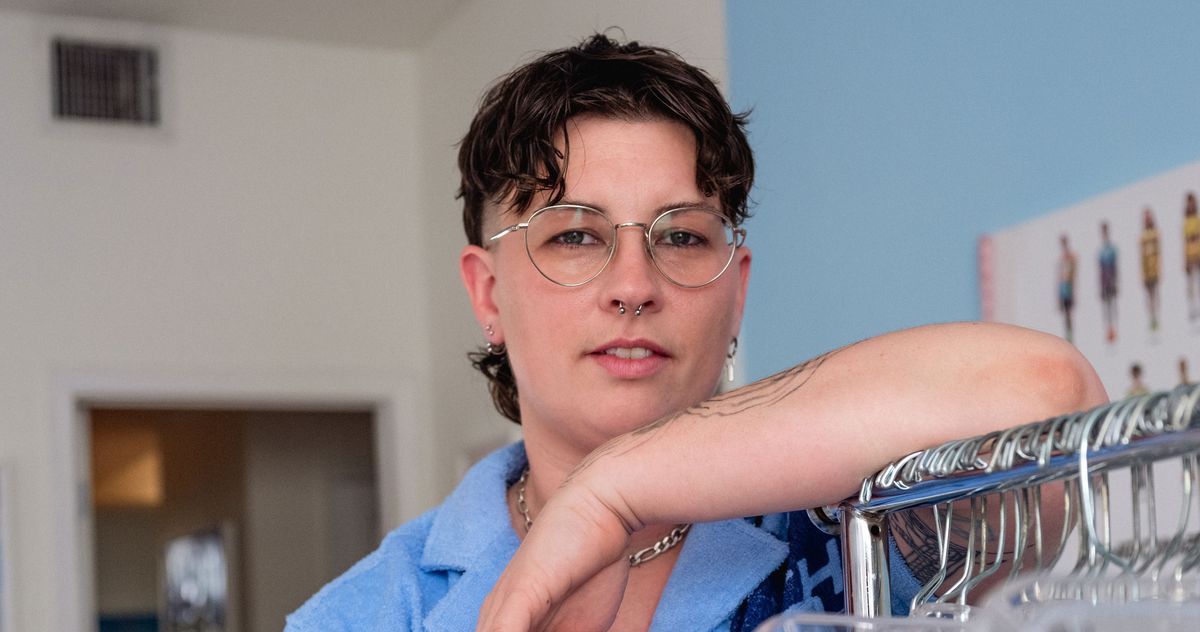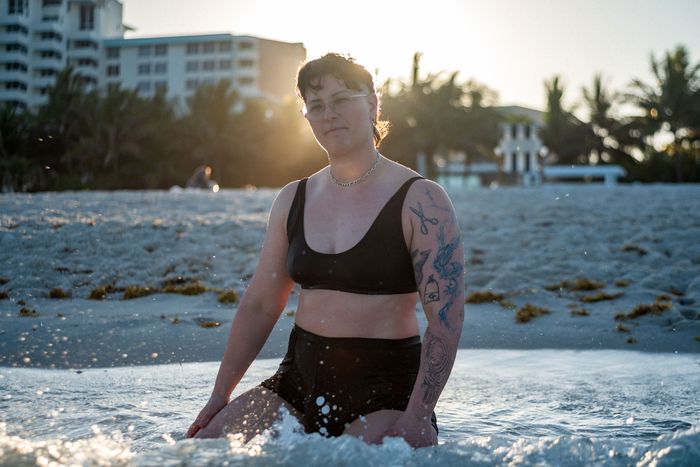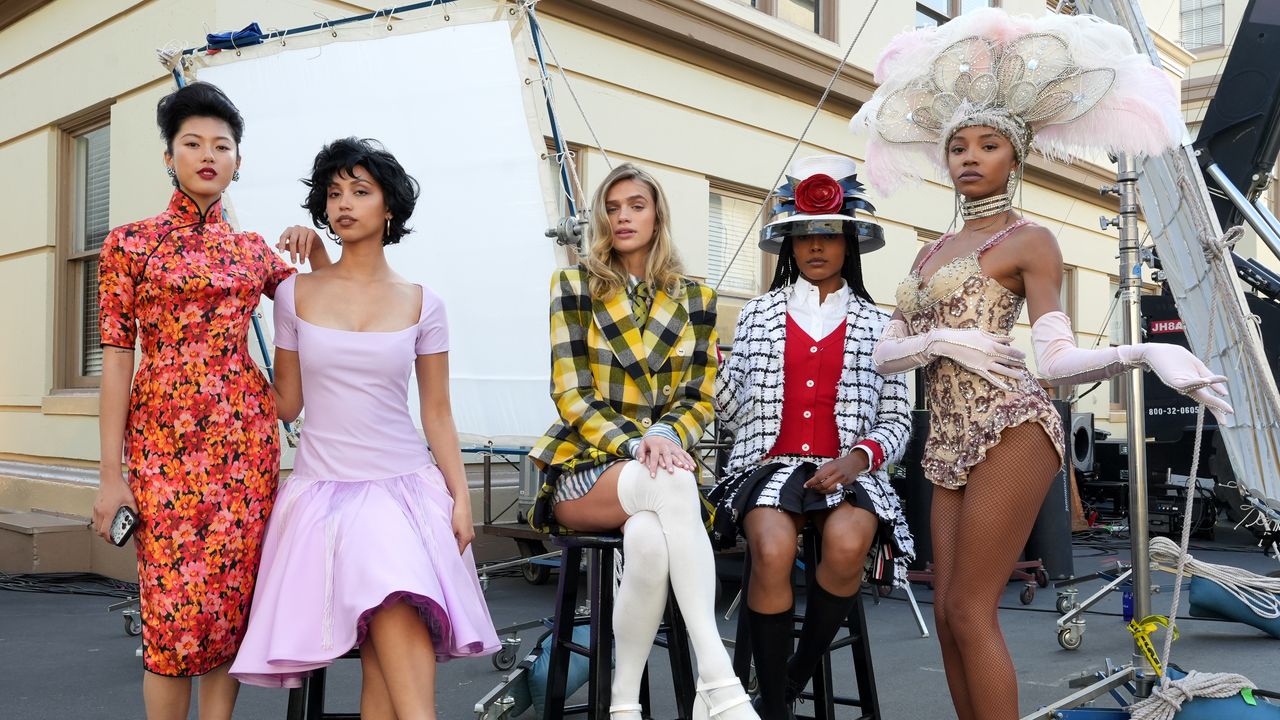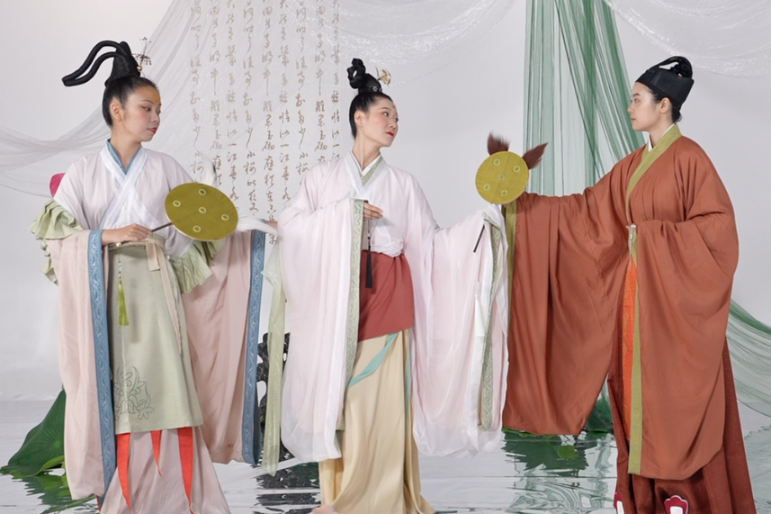Fifteen years ago, I took a leap of faith. I quit my day job as an architect and moved to New York City to start my own brand. I didn’t like the fashion industry’s focus on thinness and chasing the next big trend. I wanted to use my background in architecture to make what I was calling “scaffolding for the body,” and I started making corsets that looked like cages. That year, I founded Chromat, a gender- and size-inclusive bodywear label. The spring 2025 collection will be Chromat’s last — for now.
In the past few years, I have faced immense creative roadblocks with Chromat. Every step — coordinating with fabricators, ordering materials, planning shoots, and editing images — has felt like wading through waist-high mud. Finances were always an issue. I never had investors. I just sold some clothes and made some money, and then used that money to make the next batch.
But the most important reason I’m taking a hiatus — a pause, a sabbatical — is to reconnect with my passion for design and explore what feels right in my body and evolving gender. As I move through my transition from cis woman to transmasculine nonbinary, I need time to understand my lived experience before I can design gender-inclusive garments for my fellow transmasculine and nonbinary people. When I started making clothes, I was doing so for myself and the strong women in my community. But in the past few years, it’s been weird and disorienting to try on the clothes I design and notice that they don’t feel right anymore. They’ve become too girlie for me. And I just can’t keep making things that I no longer connect with.
Inclusivity has always been a foundational part of the brand. In 2019, we had our ten-year anniversary during New York Fashion Week. That year, most shows only had one or two plus-size models. We had 15. I invited models to bring their kids, and we made matching “mommy and me” outfits. We showed people with disabilities and across the gender spectrum: We had trans women, transfemme and nonbinary people, a model who identified as “masculine of center,” a pregnant woman. Geena Rocero brought Lina Bradford, her “trans mother.” That show felt like a culmination of the beautiful community I had built through Chromat: It was an opportunity for people to feel embodied in their gender in a way that they didn’t experience in other events during Fashion Week.
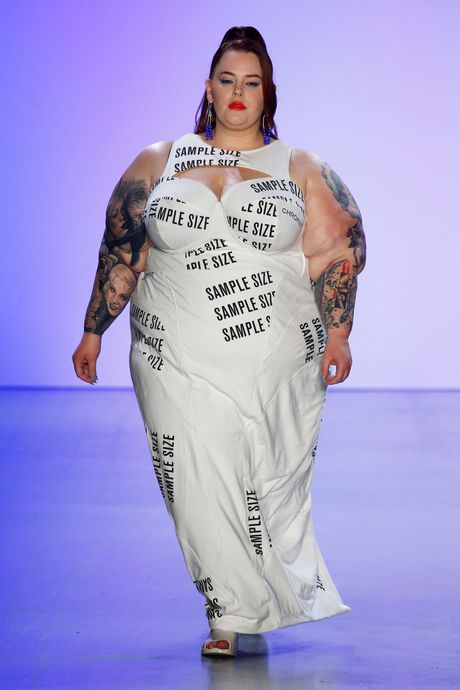
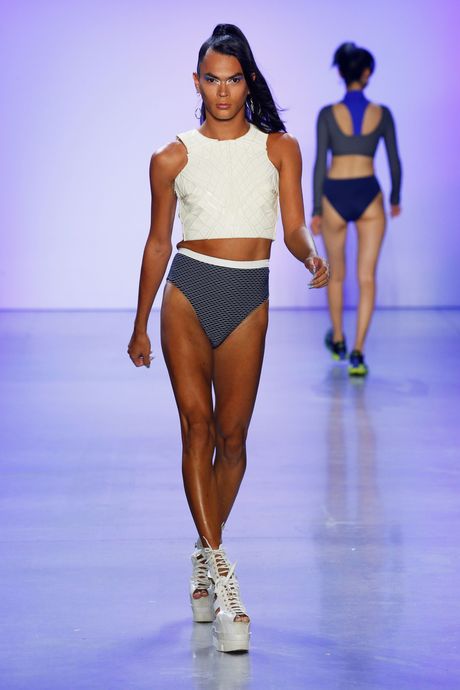
From left: Photo: WWD/Penske Media via Getty ImagesPhoto: WWD/Penske Media via Getty Images
From top: Photo: WWD/Penske Media via Getty ImagesPhoto: WWD/Penske Media via Getty Images
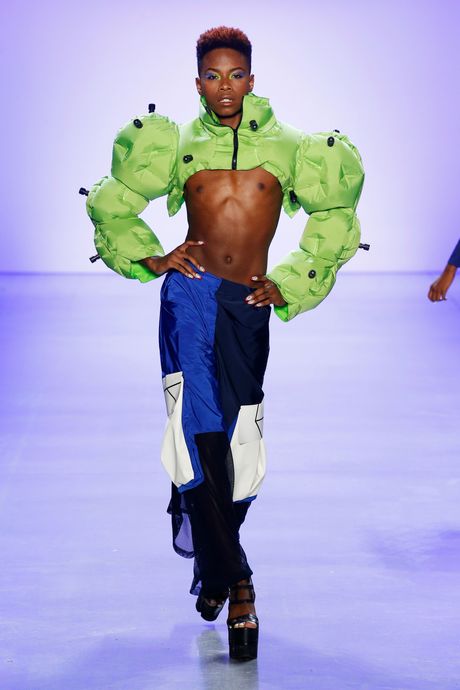
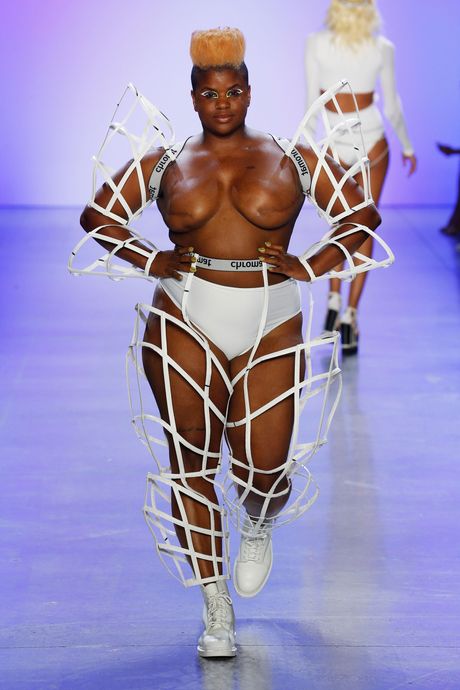
From left: Photo: WWD/Penske Media via Getty ImagesPhoto: WWD/Penske Media via Getty Images
From top: Photo: WWD/Penske Media via Getty ImagesPhoto: WWD/Penske Media via Getty Images
Then the pandemic hit, and everything that was hard about running an independent fashion label only got more difficult. I had to lay off my staff of three people. The brand had always been a collaboration, and without having a team and an office to show up for, I struggled to feel motivated.
In 2021, Chromat had a runway show on the Riis Beach boardwalk during New York Fashion Week. It was a collaboration with Tourmaline, an artist who wanted to create swimwear for “girls who don’t tuck.” The project came into my life at the perfect time. I felt invigorated by clothes once more. Tourmaline helped me realize, even more deeply, the possibilities of creating clothes for trans people; it furthered my understanding of how clothing can be a device of gender euphoria and a way to expand how trans people are seen in public. By creating this trans-affirming swimwear, we simultaneously created options for transfemmes, as well as transmasculine people who wear a packer, which is a prosthetic bulge. Wearing that collection was the first time I tried a packer on, and it felt thrilling. That’s one of the things I love about adaptive design: When you create a product that serves a specific group, like designing string-bikini bottoms with a wider crotch gusset for people with packages, it often provides solutions for others, too. For instance, we realized that many plus-size customers also appreciated the wider gusset, and transfeminine swimwear worked for everyone — cis, trans, and nonbinary.
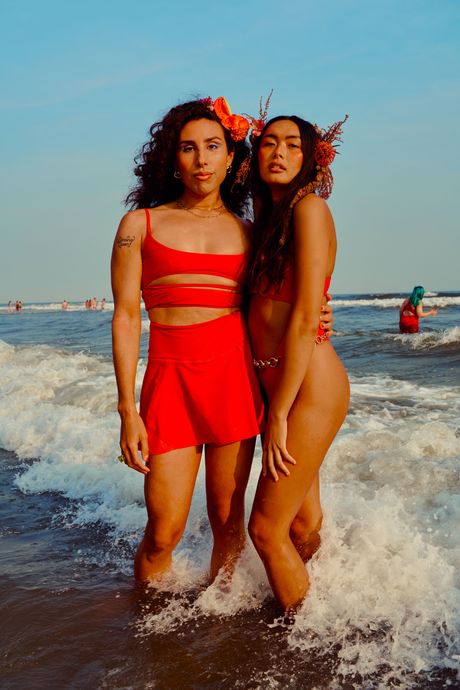
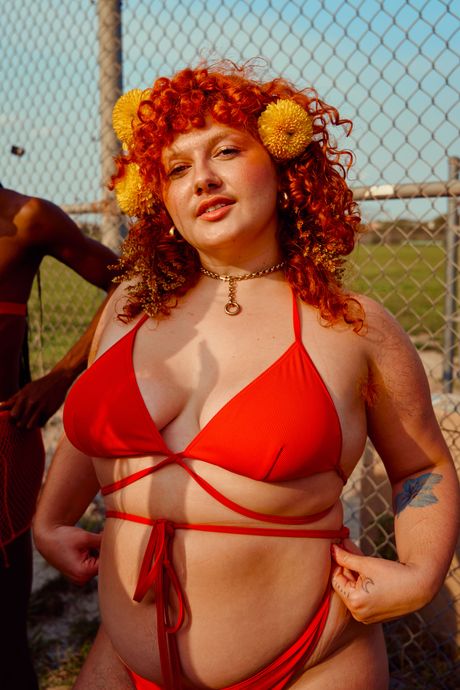
From left: Photo: Alec VierraPhoto: Alec Vierra
From top: Photo: Alec VierraPhoto: Alec Vierra
Then, a few years later, my ten-year marriage ended, and I lost my biggest collaborator and supporter. When she moved out, I struggled with feelings of rejection and unworthiness, questioning my value and place in the world. But through that painful shedding, I gained a new sense of what my life, and my gender, could be. Now divorced, I found I could define myself in new ways. First, I cut my hair shorter. Then, I started dressing in loose, oversize clothing that felt more comfortable. Each small shift felt freeing, pleasurable, fun, and powerful. As I began dating femme women who saw and affirmed my masculinity, I found myself asking, How do you know if you’re a trans man or just a masculine lesbian? A friend offered her take: Most lesbians aren’t asking themselves that question.
I told my friends that I was worried it was too late. I’d already lived 40 years in this body as a woman, so what was the point of changing it now? They gently pushed back, saying, I don’t think that’s how it works. They reminded me that I could change my life at any age. Still, it felt overwhelming. I admitted I was scared of needles, and they reassured me that testosterone gel existed. They connected me with a local clinic specializing in queer health care that my friend, a former New Yorker who had also relocated to South Florida, called “the Callen-Lorde of Miami.” I scheduled my first appointment, feeling both terrified and excited.
The doctor’s appointment was surprisingly easy. I had expected to face a Ron DeSantis–appointed firing squad, having to prove my trans-ness and show pictures of myself as a young tomboy with a bowl cut. I felt unsure of what to say, because even now, I don’t identify as a “man.” I don’t want a beard, and I don’t use he/him pronouns. I was simply curious about exploring my masculinity, being an androgynous, nonbinary butch, and growing bigger and stronger with a deeper voice. Could those qualities be considered womanly? And who, exactly, decides what defines a man or a woman?
I’ve been on testosterone for almost a year now, and I love it. The biggest surprise has been the emotional and mental confidence, as well as the energy, that I gained almost immediately. I’ve been calling it “delulu juice” because the hormones make me feel confident to speak on anything, whether or not I have any expertise. Every now and then, I’ll wear a packer. On the flip side, I’ve heard that when trans women start estrogen, many experience crippling self-doubt. It feels so unfair that hormones play such a defining role in how we perceive ourselves and navigate the world. I wish everyone could experience the confidence that testosterone gave me.
Because of all the changes in my home life, my body, my mind, and how I exist in the world, Chromat has started to feel like a project from my old life. At this point, I only feel comfortable wearing a few of the swimsuits. There’s no reason why a transmasculine nonbinary person can’t wear a string bikini or a strappy one-piece with underboob, but for me, it doesn’t feel euphoric — it feels confusing. I don’t like the idea of people seeing my body and reading me as a woman.
The experience of running Chromat built my creative confidence; it was such an amazing experience to create the world we wanted to see where all sizes, shapes, and genders are celebrated. It was a message that so many people connected with. But stepping back from fashion has allowed me the space to separate my worth and identity from my business and to explore new ways to share my vision and creativity with the world.
Photo: Nicole Combeau
I recently started a project where I photograph my queer and trans friends in the ocean, capturing moments of joy, solace, and connection. Then I transfer these images onto fabric using cyanotype techniques and quilt them together — another new practice I recently picked up that’s allowed me a joyous way to connect with textiles. Then I put together community quilting circles where friends embroider the quilts and add messages about their spiritual connection with the ocean. Quilting feels like the perfect medium — one that not only preserves these histories but also embodies the warmth of being held and embraced by our natural aquatic environment. At a time when our country is trying to erase queer and trans history from public education and criminalize trans health care, my series asserts that our stories will not disappear.
For a long time, I thought that a “successful” company must always be expanding: more products, more stores, more revenue, endless growth. But I don’t believe in that model anymore. Growth for growth’s sake isn’t the only way. Things can get smaller without shame. Things can end without failure.
